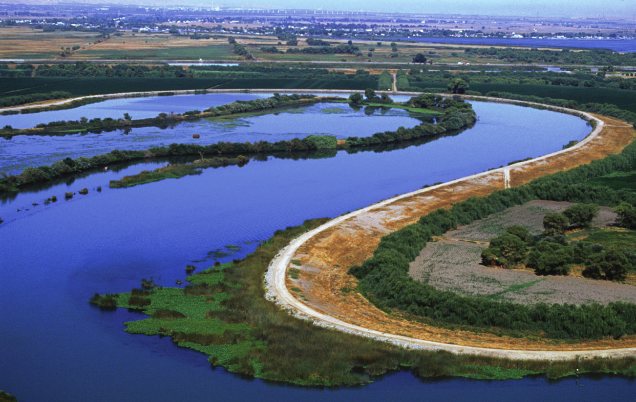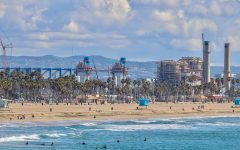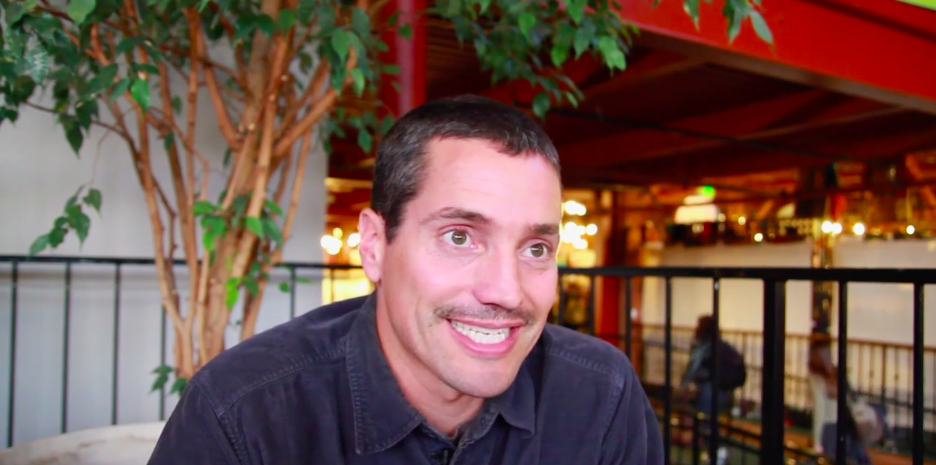
California Bay Delta water (Photo: USGS.gov)
Ringside: Wade Crowfoot on Desalination, and the Opportunity Cost of the Delta Tunnel
When it comes to desal big enough to matter, Crowfoot and Newsom have a long way to go
By Edward Ring, February 15, 2024 7:31 am
 Last week in Sacramento at Cal Desal’s annual conference, one of the highlights was an appearance by Wade Crowfoot, California’s Natural Resources Secretary. In his remarks, and in answer to questions from the audience, Crowfoot sought to create the impression the Newsom administration is supporting desalination projects.
Last week in Sacramento at Cal Desal’s annual conference, one of the highlights was an appearance by Wade Crowfoot, California’s Natural Resources Secretary. In his remarks, and in answer to questions from the audience, Crowfoot sought to create the impression the Newsom administration is supporting desalination projects.
“The last thing we want to do is put cost-prohibitive constraints on desal,” he said, adding that the state needs to “clarify the permitting pathway.” He even said that California’s “regulatory agencies are getting the message that desal is good.”
But reality preempts rhetoric. In May 2022, Newsom’s appointees to the California Coastal Commission unanimously denied approval to construct a large scale desalination plant in Huntington Beach. At a capacity of 55,000 acre feet per year, this proposed twin to the Carlsbad plant, along with other investments already made or planned in runoff harvesting and wastewater recycling, would have made Northern Orange County, population 2.5 million, completely independent of imported water.
When it comes to desal big enough to matter, Crowfoot, and Newsom, have a long way to go before any civil engineering contractor, anywhere, decides to invest another 20 years and $100 million in engineering studies and permit applications just so they can be told no deal at the last minute.
Desalination deserves in-depth, fair minded examination that it doesn’t get. Not from regulators, not from legislative staff, and certainly not from the legions of journalists in California who for the most part just obediently regurgitate outdated soundbites coming from activists whose only answer to water scarcity is rationing.
Crowfoot’s remarks of most concern, however, were about funding water projects. He acknowledged that “cost is the challenge across most agencies” and then mentioned the state’s determination to fund the Delta Tunnel. While any advocacy either for or against the Delta Tunnel is a minefield, it might be productive to consider how the multiple billions the state is prepared to spend to build that behemoth might be otherwise spent. How many billions? The official estimate is $16 billion. Does anyone believe that? The Sierra Club recently estimated the ultimate cost at $56 billion. While the Sierra Club might at times engage in hyperbole, in this case they’re probably correct. Let’s split the difference. $30 billion.
For $30 billion, you might do the following:
– Construct wastewater recycling and reuse plants from San Francisco to San Diego to eliminate nitrogen rich, PFAS laden partially-treated water from being dumped into the ocean, after being imported at great cost via aqueducts and pumping stations to be used only once. While $30 billion – at least in the regulatory environment we currently live with – may only pay to recycle a million acre feet per year, that’s twice as much as the 500,000 acre feet per year the State Water Resources Board currently predicts will flow through the Delta Tunnel.
– Build the Sites Reservoir, the Temperance Flat Reservoir, the Pacheco Reservoir, the Del Puerto Reservoir, and raise the Shasta Dam. This would create around 5 million acre feet of additional storage with a probable average annual yield of around 1.5 million acre feet. It would also generate hydroelectric power and offer potential for pump storage. And there would probably be enough money left over to repair and restore full capacity to the California Aqueduct, the Delta Mendota Aqueduct, and the Friant-Kern Aqueduct.
– Repair and upgrade the Delta levees, and build protected nurseries for smelt and salmon. Construct fish-friendly Delta diversion channels as proposed in the Water Blueprint for the San Joaquin Valley. Build pipelines/aqueducts to move water from these diversion channels into rapid aquifer recharge via “paleo valleys.” Look that up here. This innovative solution to the goal of taking a “big gulp during storms” should be receiving serious attention from Sacramento.
– Build 1 million acre feet per year of desalination capacity. With expected technological advances in desal, and reasonable regulatory reforms, there would be money left over. The energy cost to desalinate 1 million acre feet per year? About 400 megawatts, which is only around 1.25 percent of California’s current electricity consumption.
Compared to the Delta Tunnel, each of these four options will yield more water, for less money. And if the cost overruns on this proposed tunnel end up being comparable to the overruns we’re seeing for High Speed Rail, what Newsom and Crowfoot are preparing to ultimately eke out of state and federal funds for its construction might actually pay for all four of these alternative projects.
Crowfoot got one thing unambiguously right in his remarks on February 8 at the Cal Desal Conference. Regional water agencies face enormous funding challenges. For the state to put all of their biggest financial eggs into the Delta Conveyance ignores this fact.
- Ringside: Will the Delta Pumps Operate at Capacity this Winter? - December 18, 2025
- Ringside: Will Advocates for More Water Supply Projects Find Unity? - December 11, 2025
- Ringside: EVs and California’s Future Demand for Electricity - December 4, 2025




California Globe has previously reported on Wade Crowfoot who was appointed by Newsom to be California’s Natural Resources Secretary. He’s highly controversial and an ethically challenged Democrat from Oakland who has a long history of pushing the deep-state globalist climate change scam agenda. Why does he and the Newsom regime only want the state to only focus funds on the Delta Conveyance Tunnel compared to other options that will yield more water, for less money, at a time when regional water agencies face enormous funding challenges? No doubt the Delta Conveyance Tunnel gives Newsom and the criminal Democrat mafia more control over water supplies and communities?
(https://californiaglobe.com/fr/gov-newsoms-key-staff-picks-wade-crowfoot/)